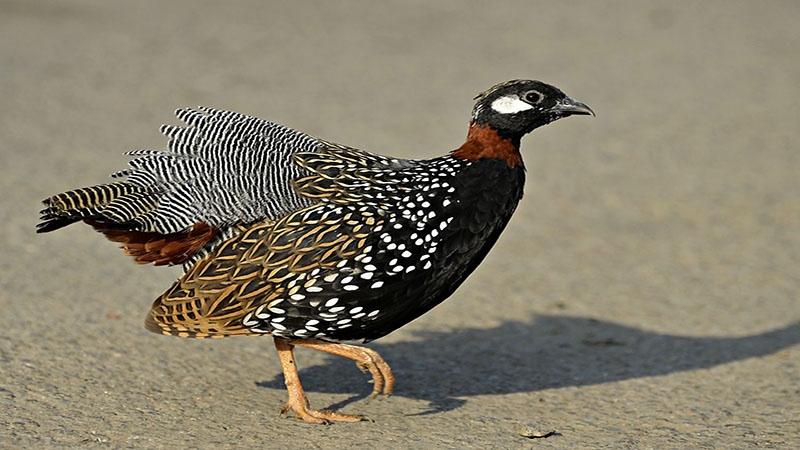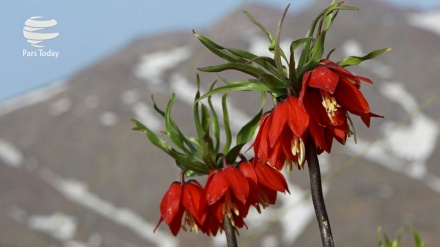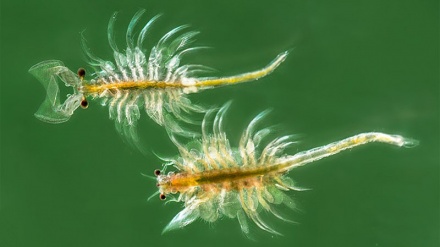Iran’s rare animal and plant species (13)
One of the rare local birds, which have been currently placed within the International Union for Conservation of Nature red list of threatened species, despite the support of Islamic Republic of Iran Environment Protection Organization for this bird, is black francolin. Today, we introduce this pretty bird.
Black francolin is a beautiful bird under the heading of poultry and pheasants. This bird maintains black feathers and wings with white spots; round wings; a short tail; and a body the size of a partridge. The behavioral pattern of this bird is also similar to that of partridge. The male bird has black head, chest, and abdomen with white spots on its sides and a pale brown neck, which separates its head and chest from each other. Its back and wings are brown in color with golden stripes. The feathers underneath its body and tail are brown in color and it has a black tail with narrow, white stripes. Its legs are brownish orange. Although the female francolin is brown in color with minute white spots, its head is paler in color, and it maintains a white throat. Pale brown spots are observed on the back of its neck, and its tail is brown with narrow white stripes. The feathers underneath its tail are pale brown. The average length of this bird stands at 31 centimeters and its weight totals 450 grams.
Black francolins usually hide themselves from the public. They prefer to live in habitats with appropriate flora, close to water sources, and feed on grain seeds, grapes, insects, and worms. They do not fly until they feel a threat. These birds are usually seen in pairs, and usually male francolins are better spotted in comparison to female francolins, due to the beautiful sounds that they make. The voice of male black francolins is usually observed early in the morning and upon sunset. The male bird stands on a mound or a rock, making beautiful, loud sounds.
These birds usually hatch their eggs between bushes and wheat farmlands. They usually hatch two to five eggs in the first year of reproduction. Gradually, in the next seasons, they hatch more eggs, while ultimately hatching up to twenty eggs. The interesting fact about this bird is that if someone touches its eggs or take a few of its eggs, the black francolin no longer sits on its eggs, while building a nest elsewhere, and hatching other eggs.
Black francolins live in warm and dry regions such as Khuzestan Province in southern Iran. However, given that Miancaleh wildlife shelter, in northeastern Iran is an appropriate habitat for this bird, the black francolins also live and reproduces in this region. In the past, large numbers of this bird lived in southern Iran and their habitats covered larger areas. However, today, as the result of poaching, this bird is on the verge of extinction across many regions. Although black francolins live out of sight, they are still easily targeted by poachers when they wonder close to roads to use minute stones for digestion of food.
The destruction of this bird’s nests and displacement of their eggs by farmers is another factor which has pushed black francolins to the verge of extinction. Moreover, the transformation of forested regions and arid lands into farmlands has forced this bird to seek refuge in wheat and barley farmlands, which are usually reaped concurrent with these birds hatching eggs. Thereby, the nests of this type of bird are usually destroyed and their eggs are usually broken.
Given the paramount importance of black francolins, this bird is protected in the Islamic Republic of Iran and the poachers of this bird are strongly dealt with.
MR/SS



